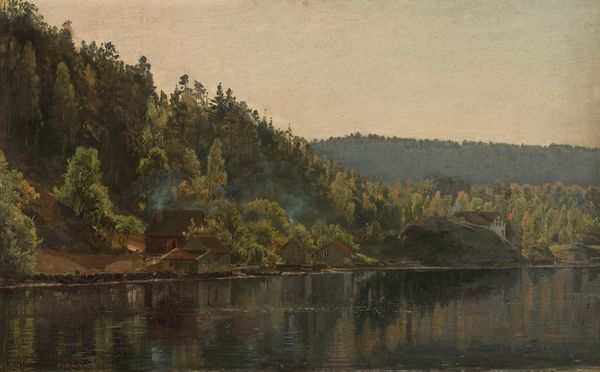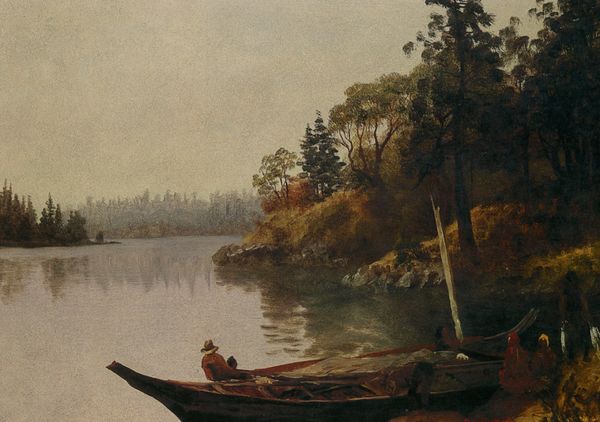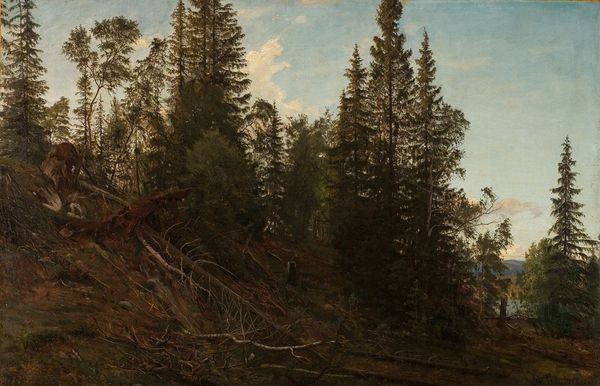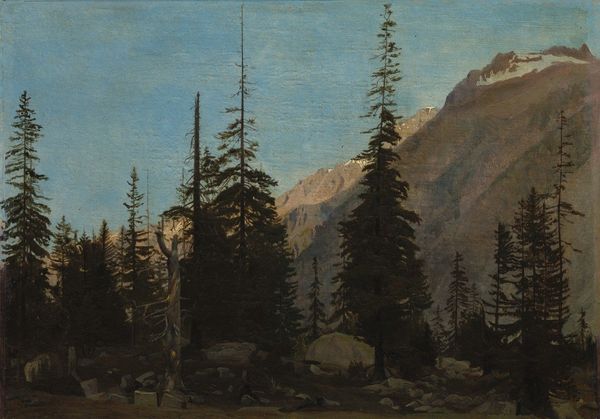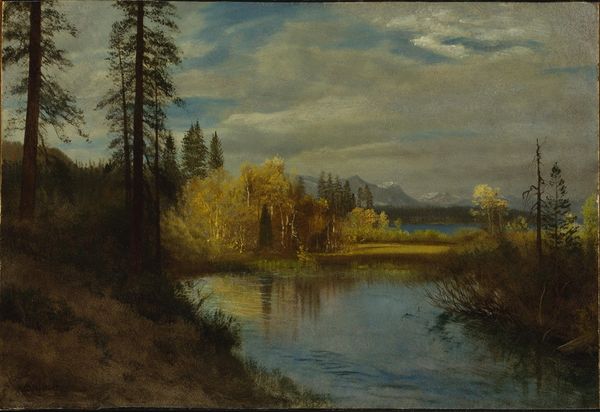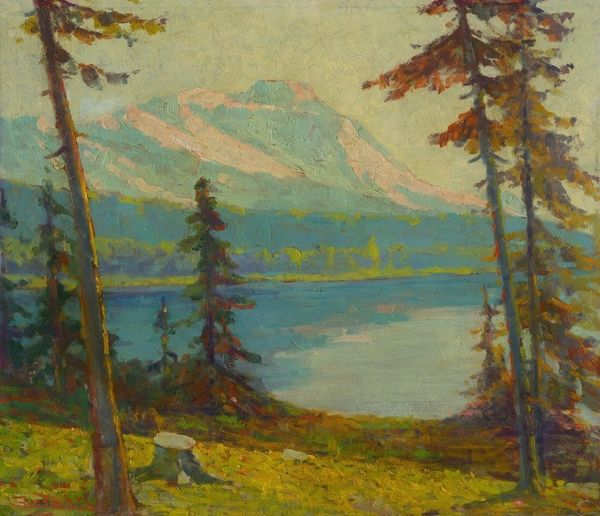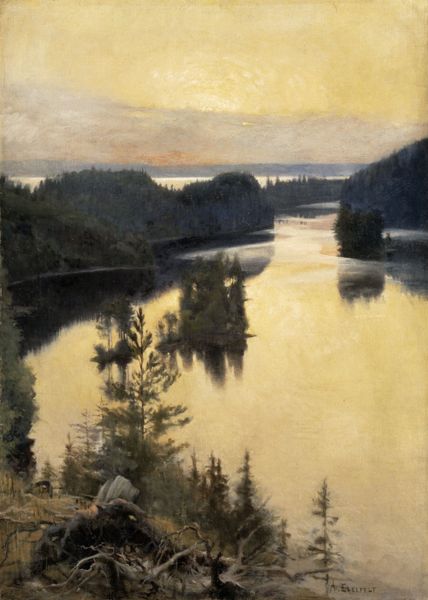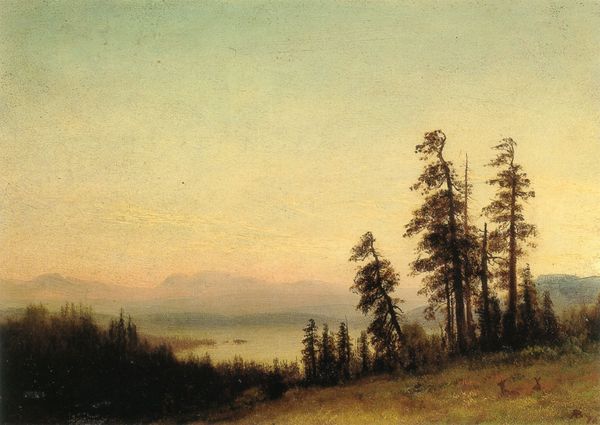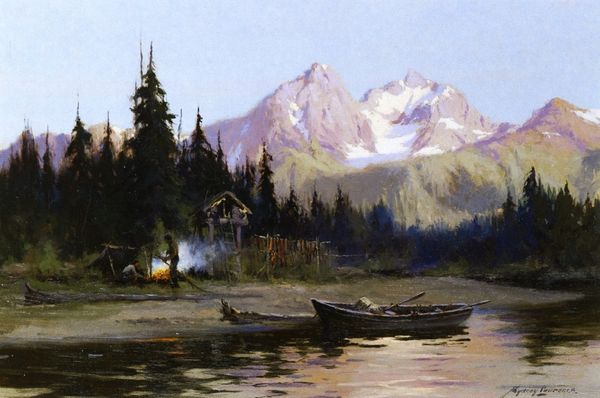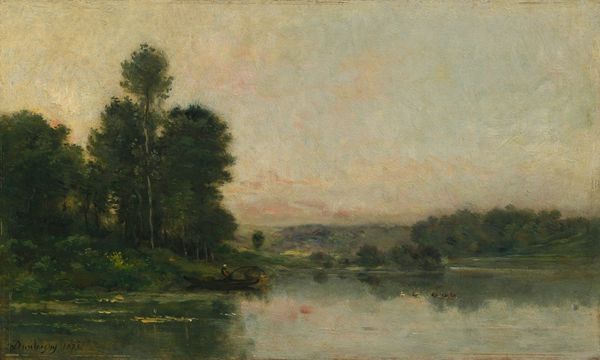
Copyright: Public Domain: Artvee
Editor: We're looking at "Indian Hunters in Canoe" by Albert Bierstadt, painted around the 1850s, using oil. The first thing that strikes me is the density of the forest pressing in on the figures in the canoe. It's a little ominous. What do you see when you look at it? Curator: Precisely, the compositional arrangement foregrounds a study in contrasts. Consider the horizontal plane of the water bisecting the painting, emphasizing a play between the reflected light and the encroaching darkness of the vertical forest. The tonal gradations work effectively, almost like a curtain, obscuring the full picture. It compels a visual parsing. Editor: So it’s less about what’s depicted and more about how it’s depicted? Is it fair to say the texture and shadows make you consider artistic composition? Curator: Yes, the "what" is secondary to the "how." One could say Bierstadt masterfully employs the dark hues to both conceal and reveal. Note how the small canoe is positioned, not centrally, but slightly off, disrupting any conventional sense of symmetry, creating visual tension. What implications might that hold for your own interpretation? Editor: That the smallness of the boat and hunters emphasizes humanity's tenuous position in the immensity of the wilderness? Almost a sense of being overwhelmed? Curator: An astute observation. Now, let's consider the surface of the work. Are there specific areas that stand out in their materiality, texture or handling of the paint? How does the impasto or lack thereof contribute to the overall impression? Editor: I can see the more fluid brushstrokes in the water, while the trees look more deliberate and solid, creating depth...it's clever. I guess I usually focus on the subject matter. Thanks! Curator: Remember to observe closely how form dictates function, as in visual art, medium truly can shape message. Thank you for helping see with fresh eyes today.
Comments
No comments
Be the first to comment and join the conversation on the ultimate creative platform.
